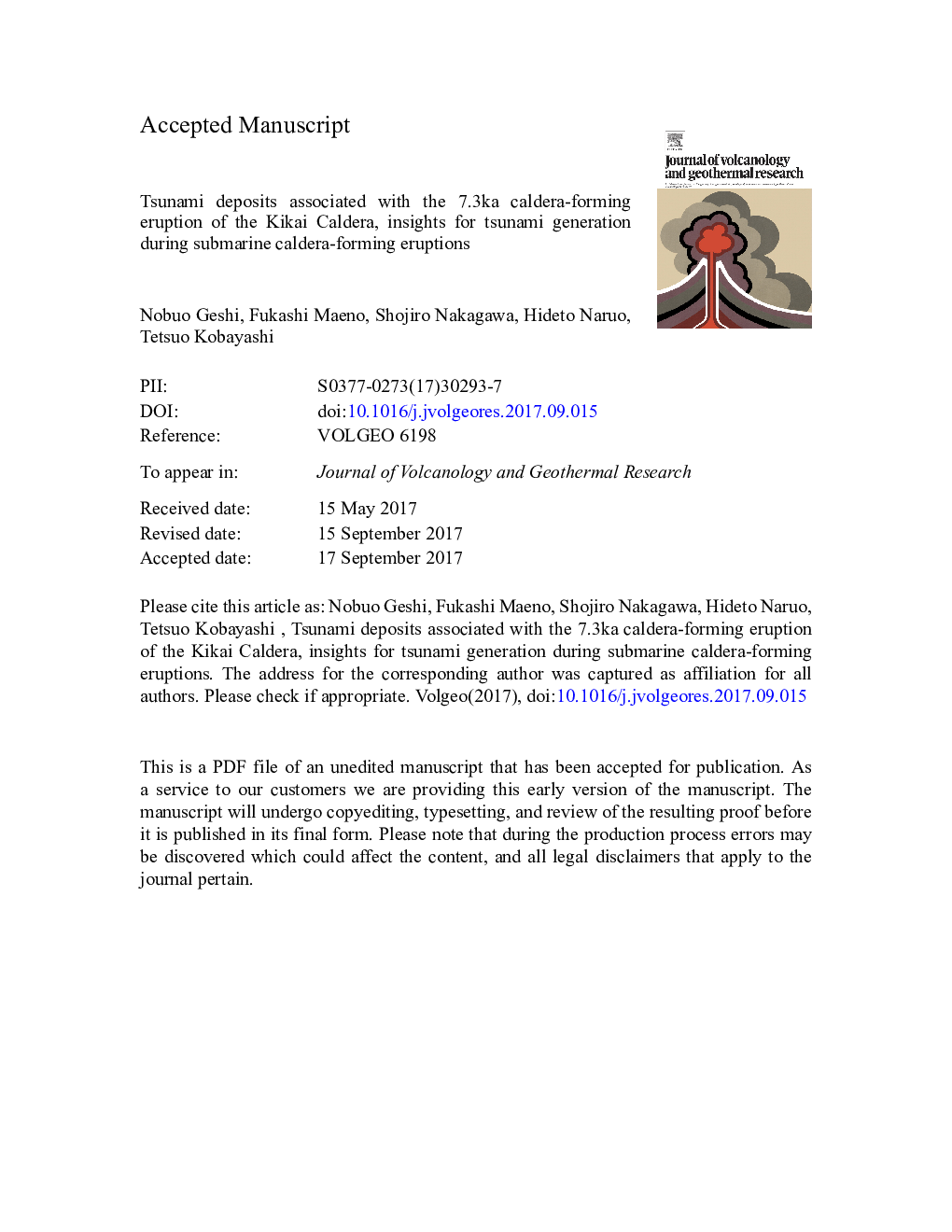| کد مقاله | کد نشریه | سال انتشار | مقاله انگلیسی | نسخه تمام متن |
|---|---|---|---|---|
| 8911460 | 1638276 | 2017 | 36 صفحه PDF | دانلود رایگان |
عنوان انگلیسی مقاله ISI
Tsunami deposits associated with the 7.3Â ka caldera-forming eruption of the Kikai Caldera, insights for tsunami generation during submarine caldera-forming eruptions
دانلود مقاله + سفارش ترجمه
دانلود مقاله ISI انگلیسی
رایگان برای ایرانیان
کلمات کلیدی
موضوعات مرتبط
مهندسی و علوم پایه
علوم زمین و سیارات
ژئوشیمی و پترولوژی
پیش نمایش صفحه اول مقاله

چکیده انگلیسی
Timing and mechanism of volcanic tsunamis will be a key to understand the dynamics of large-scale submarine explosive volcanism. Tsunami deposits associated with the VEI 7 eruption of the Kikai Caldera at 7.3Â ka are found in the Yakushima and Kuchinoerabujima Islands, ~Â 40Â km south -southeast of the caldera rim. The tsunami deposits distribute along the rivers in their northern coast up to ~Â 4.5Â km from the river exit and up to 50Â m above the present sea level. The tsunami deposits in the Yakushima area consist of pumice-bearing gravels in the lower part of the section (Unit I) and pumiceous conglomerate in the upper part (Unit II). The presence of rounded pebbles of sedimentary rocks, which characterize the beach deposit, indicates a run-up current from the coastal area. The rip-up clasts of the underlying paleosol in Unit I show strong erosion during the invasion of tsunami. Compositional similarity between the pumices in the tsunami deposit and the juvenile materials erupted in the early phase of the Akahoya eruption indicates the formation of tsunami deposit during the early phase of the eruption, which produced the initial Plinian pumice fall and the lower half of the Koya pyroclastic flow. Presence of the dense volcanic components (obsidians and lava fragments) besides pumices in the tsunami deposit supports that they were carried by the Koya pyroclastic flow, and not the pumices floating on the sea surface. Sequential relationship between the Koya pyroclastic flow and the tsunami suggests that the emplacement of the pyroclastic flow into the sea surrounding the caldera is the most probable mechanism of the tsunami.
ناشر
Database: Elsevier - ScienceDirect (ساینس دایرکت)
Journal: Journal of Volcanology and Geothermal Research - Volume 347, 15 November 2017, Pages 221-233
Journal: Journal of Volcanology and Geothermal Research - Volume 347, 15 November 2017, Pages 221-233
نویسندگان
Nobuo Geshi, Fukashi Maeno, Shojiro Nakagawa, Hideto Naruo, Tetsuo Kobayashi,